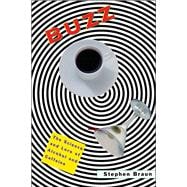
Note: Supplemental materials are not guaranteed with Rental or Used book purchases.
Purchase Benefits
Looking to rent a book? Rent Buzz The Science and Lore of Alcohol and Caffeine [ISBN: 9780195092899] for the semester, quarter, and short term or search our site for other textbooks by Braun, Stephen. Renting a textbook can save you up to 90% from the cost of buying.
| Introduction | p. 3 |
| Alcohol 101 | p. 8 |
| Down the Hatch | p. 20 |
| Your Brain on Alcohol | p. 38 |
| Sex, Snores, and Stomach Aches | p. 61 |
| Demon Rum | p. 88 |
| The Eyelids of Bodhidharma | p. 107 |
| A Quicker Genius | p. 123 |
| The Body, Wired | p. 137 |
| Hooked | p. 162 |
| Better Living Through Chemistry | p. 182 |
| Postscript | p. 193 |
| References and Suggested Reading | p. 197 |
| Index | p. 206 |
| Table of Contents provided by Syndetics. All Rights Reserved. |
The New copy of this book will include any supplemental materials advertised. Please check the title of the book to determine if it should include any access cards, study guides, lab manuals, CDs, etc.
The Used, Rental and eBook copies of this book are not guaranteed to include any supplemental materials. Typically, only the book itself is included. This is true even if the title states it includes any access cards, study guides, lab manuals, CDs, etc.